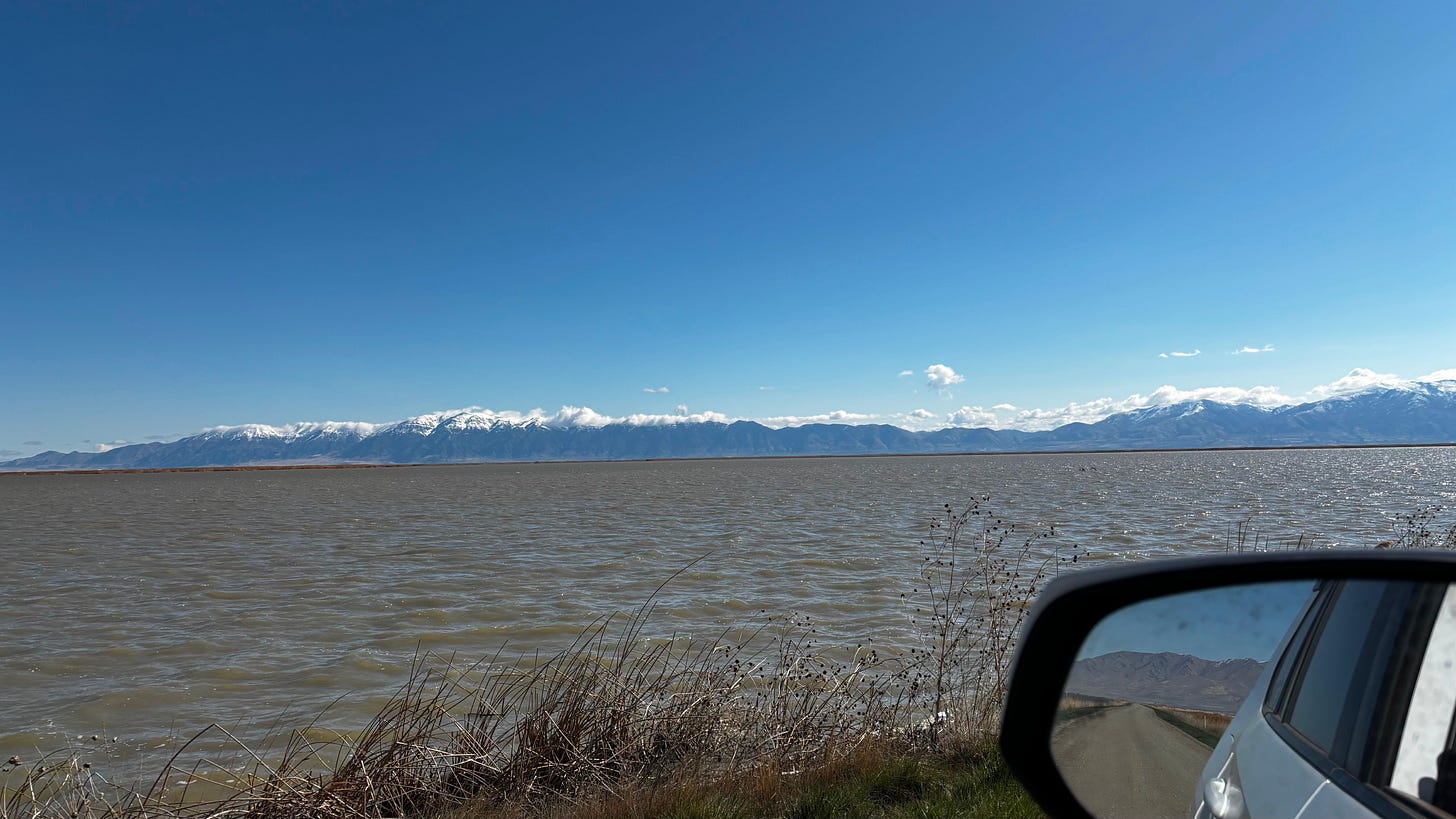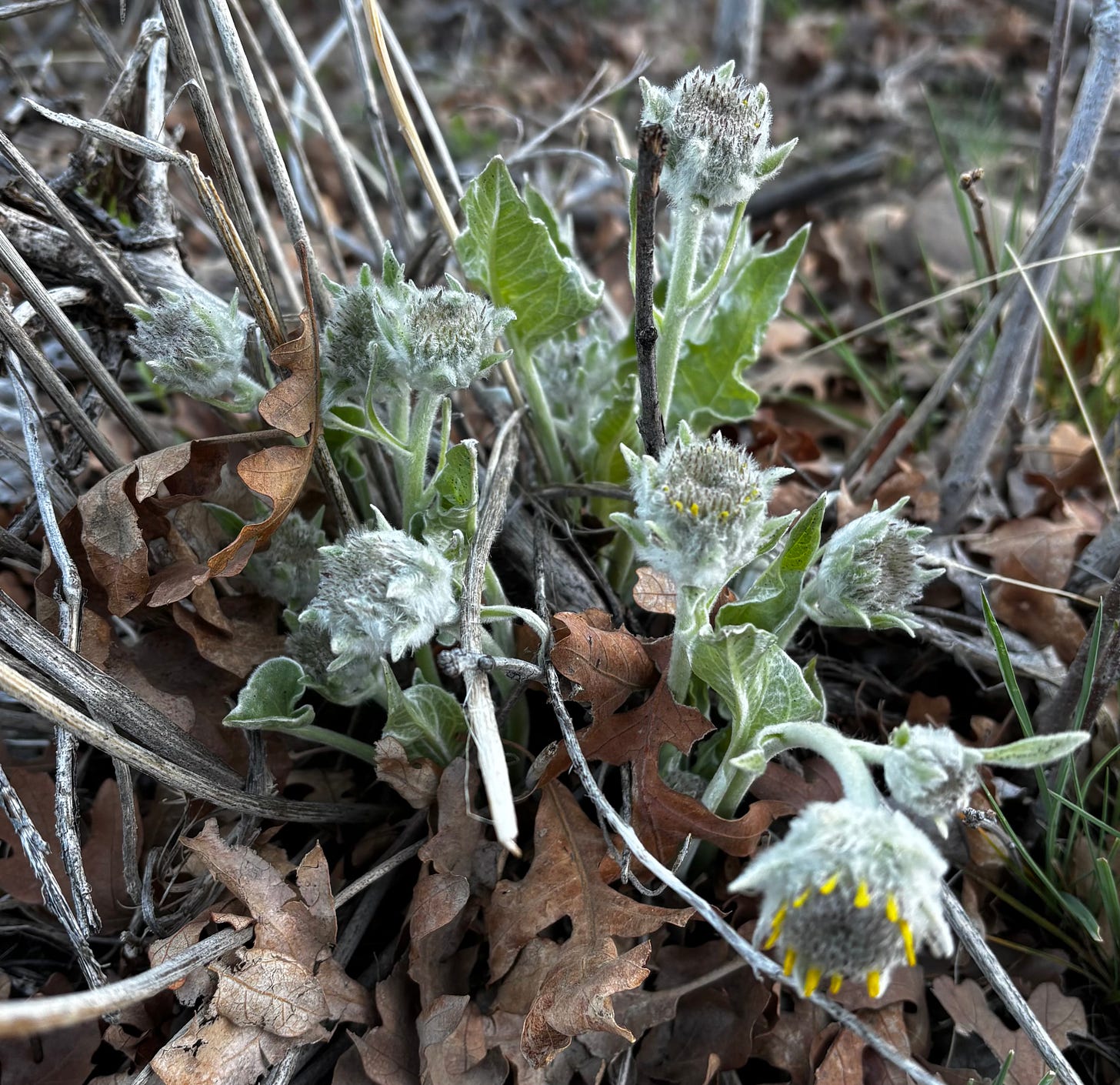Senses
Looking (but mostly listening) to birds, and then looking (and not listening at all) at wildflowers
Senses
Every few months I drive to the bird refuge near Brigham City. It is about two hours from my house. There on the upper edge of the Great Salt Lake is the Bear River Migratory Bird Refuge. I have been making this trip regularly for a few years now.

Mostly I see the same species. Earlier this month when I drove up with my friend Sam, there were 23 species that I identified definitively and a handful that I couldn’t because they were either too far away, moved too quickly for me to get a good look, or (mostly) I’m not that great a birder. These numbers are pretty average for me because, as I said, I’m not a great birder. But I have fun.
My interest in birds started when I was in college, and came because of a throwaway comment from a professor in a GE class. He said that he always tried to notice the birds on his commute to campus because it was fun to think of all these wild animals that he was seeing.
I thought: wait, birds really are wild animals. Anytime I see a bird, it’s evidence that there’s still a little wildness around me.
Before the professor’s comment, I had honestly never given a thought to birds before. They were simply there, just filling out the background texture. They left no lasting impression on me, just like the city of Barstow. A bird, an escaped Mylar balloon, a gauzy plastic grocery bag blown by the wind—these were all just things in the sky.
I almost immediately went out and bought a Peterson Field Guide to Western Birds (third edition, since this was probably in 1994 or so).
Earlier this week I hiked up Rock Canyon and I heard a canyon wren. There is no bird song that I enjoy more. I mean: c’mon. The Western Meadowlark is close, but really there’s no contest.
When I go out birding, I listen hard. I imagine myself listening 360º. It’s as if I put my ears on poles and spin them in circles. That’s silly of course because my ears stay fixed to the sides of my balding head, but what changes is my awareness. Somehow my awareness increases and grows more acute. In the rest of my life, so much of the world passes by and I don’t even notice, but when I’m birding a curtain is lifted. I can hear what’s been all around me all the time.
My eyes, as tools for finding/locating birds, are secondary. My vision will never be 360º. Not even close. With both eyes open, I can perceive almost 200º—which is completely bananas and the number surprised me. Consider that 180º is a flat plane, and so looking straight ahead, I am actually seeing a little bit behind me without even turning my head.
Of course, the farther away from the center and the harder and harder it is to actually see and identify anything. But we can see movement. And that’s handy.1 And color, too. But what I think of as seeing, as in perceiving with enough clarity that I could read writing, something that’s possible because of a part of the eye called the fovea centralis, is only about 10º wide. We “see” barely wider than a laser beam.
And so: ears. I can listen behind me and to the side and we all have an amazing ability to pinpoint location based on sound. So while birding, I listen almost harder than I can see, and then I just keep my eyes in a soft focus, waiting for something to move.
Just yesterday I went to the Provo River Delta and walked around, spending about an hour. I saw 25 species.2 We might have seen a bald eagle, but it was too far away to tell for sure. I am certain that I missed a bunch, too.
It’s good to get out, use my senses—use my body—and see things. It’s nice to name them, too. Sometimes they move too fast, and sometimes they’re too far away, and sometimes my own inexperience and laziness as a birder means that I can’t name them. But still, I have fun.
Least bad poem of the week
Not unrelated to what I wrote above, this is a poem that I wrote after a solo hike checking the status of the wildflowers.
Holy dirt and holy rock, holy Cheatgrass and storksbill and milkvetch, Holy bastard toadflax and creeping dogsbane, Holy balsamroot and mules ear, Holy deathcamas and holy sego lily— Here I walk among holiness Because this here is holy. Other places might could have Holy things too: Holy weeds and holy flowers, The dandelion is holy and the bindweed Is holy and the turf grass is holy And you are holy when your holy foot Which is also your normal foot Walks upon the holy ground.

During this Holy Week, I hope that you’re feeling it. Whether that’s from the scriptures or from walking along with your eyes on the dirt scanning for wildflowers: you deserve it.
Have I mentioned lately how grateful I am for you? Yes, because you read this, but also just because.
All is well,
Jeff
More than just handy, actually. The neural pathways for motion are shorter than the feature detection pathways. So we know something is moving before we know what it is. From an evolutionary standpoint, this is part of what kept my ancestors 100 generations ago alive long enough to have kids, and to keep them alive long enough to, eventually, have me. Three cheers for biology!
1. American coot (so, so many coots. Coots for days) 2. Canada goose (note: they’re not Canadian. It’s just “Canada goose.”) 3. Mallard 4. Song sparrow 5. Clark’s grebe (or maybe a Western?) 6. Killdeer 7. Cinnamon teal 8. Red winged blackbird 9. California gull (honestly, I just guess with gulls. Here in Utah, I figure that it’s a California 9 times out of 10, and so I just go with that.) 10. American robin 11. White crowned sparrow 12. Spotted Towhee 13. Yellow-rumped warbler 14. Black-capped chickadee 15. Redhead 16. Double crested cormorant 17. Northern harrier 18. Black billed magpie 19. Bufflehead 20. Gadwall 21. American avocet 22. Black-necked stilt 23. American white pelican 24. Pied-billed grebe 25. House sparrow






Photos: rad